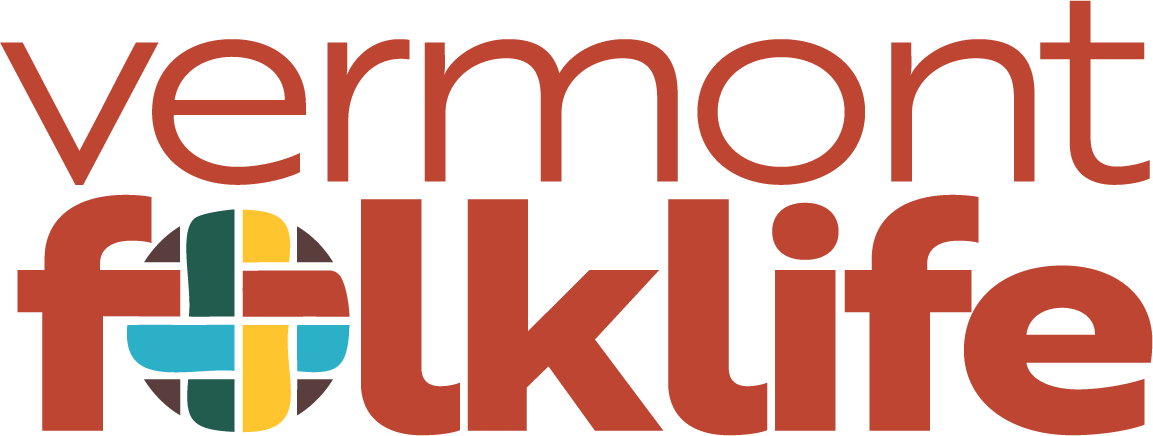Episode 15: The Apprentices
This episode of VT Untapped™ is part of a six-part series built around our “Listening in Place” project. We’ll take you into six different Vermont communities where we’ve spent some time listening to what people are going through and what they’re thinking about during the pandemic and beyond.
VT Untapped™ is available on iTunes, Stitcher, Google Play, TuneIn and Spotify
Traditional arts during lockdown.
“I think it’s so exciting to take these objects that had...a specific story that was not very positive and transform it into something that makes a statement.”
Established in 1991, our Vermont Traditional Arts Apprenticeship Program (VTAAP) was created to support the vitality of Vermont's living cultural heritage. In this episode we explore VTAAP by talking with some of the program participants—master artists and their apprentices—to explore their perspectives on these time-honored art forms, and the experience of teaching and learning during a global pandemic.
Traditional arts are often perceived as primarily—or even exclusively—tied to the past, but we see them as living practices, constantly evolving and changing to meet the unfolding needs of the people who care about them. Traditional art draws on the past, but is continually refined and shaped by needs and perspectives of the present.
Over the years the program has supported traditional forms ranging from Abenaki basketry and dance, Yankee and Franco-American fiddling, Somali Bantu instrument making, memorial stone carving in Barre, Japanese Ikebana, Congolese Dance, and Tibetan dranyan performance among hundreds of others. VTAAP is supported by the National Endowment for the Arts and donors around the state.
Despite the current challenges of the pandemic, 13 collaborations between master artists and apprentices are being supported in the 2020-2021 VTAAP cycle (you can see the full list of projects here). In this episode you’ll come along with VFC staff on three "virtual site visits” to meet a few of this year’s cohort of artists and apprentices and hear about the art forms and projects they’ll be working on over the course of the next 10 months.
Gopal & Isika
Gopal & Isika Niroula are studying traditional Nepali singing and harmonium. Gopal has been a musician his whole life, playing tabla (a double hand-drum), flute and harmonium as well as singing and has been passing on these traditions to his daughters, Isika and Ipsa. Since the pandemic started he has been hosting a weekly Facebook live program through which he connects with other musicians all over the world and delights thousands of viewers. Click here to watch a video of Gopal, Isika, and Isika’s younger sister, Ipsa.
Kate & Jude
Kate Smith & Jude Poor are studying French Canadian weaving. Kate is the director of the Marshfield School of Weaving. Kate started weaving as an apprentice to Norman Kennedy, a National Heritage Fellow and vastly influential tradition-bearer in Scottish and Gaelic weaving, song and storytelling. Kate took over direction of the school in 2007. Jude grew up on a farm in Jericho, VT in a French-Canadian family. Through this apprenticeship they hope to “carry on the traditions of my ancestors and use those methods to tell my story of growing up queer and trans on a rural Vermont farm.” Jude mentions that when their family originally moved from Québec to Vermont they settled in Burlington’s “Lakeside” neighborhood, the historic location of many of the city’s factories and textile mills.
Heather & Wolf
Heather Milne-Ritchie & Wolf Whitney. Heather-Milne Ritchie is a professional granite memorial carver and artist in many mediums who lives and works in Barre, VT. In a beautiful example of continuity Heather began carving as an apprentice to master carver George Kurjanowicz in 1999. Her apprenticeship lasted four months but her training with George lasted over four years and they remain friends to this day. Wolf Whitney was born in Barbados and moved to Vermont seven years ago after leaving the army. A longtime woodcarver, she is looking to translate her knowledge of sculpting into a medium that can stand the test of time.
Listening in Place
The Vermont Folklife Center believes that a pathway through anxiety, fear and uncertainty lies in the act of listening as much as it does in the act of telling one’s story. This is what Listening in Place is all about. If you’d like to learn more about doing your own interviews in your family, household or community or if you’re part of a group or organization and would like to partner with VFC to engage in this kind of work, please click here to learn more.
Interviews from this episode:
Kate Smith and Jude Poor were interviewed by Mary Wesley and McKinley James on Zoom on October 26, 2020.
Heather Milne-Ritchie and Wolf Whitney were interviewed by Mary Wesley and McKinley James on Zoom on November 6, 2020.
Gopal Niroula and Isika Niroula were interviewed by Mary Wesley and McKinley James on Zoom on November 11, 2020.
To access the full recordings please contact the VFC Archivist.
More Episodes
More About Listening in Place
MORE ABOUT VTAAP
Subscribe via email
Leave a review on iTunes
The views and opinions expressed by participants of this project are their own and do not necessarily reflect the official policy or position of the Vermont Folklife Center.
This episode of VT Untapped has been made possible in part by the National Endowment for the Humanities: Democracy demands wisdom.





